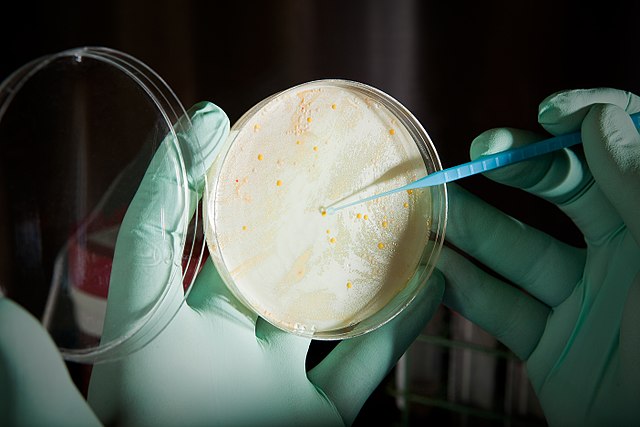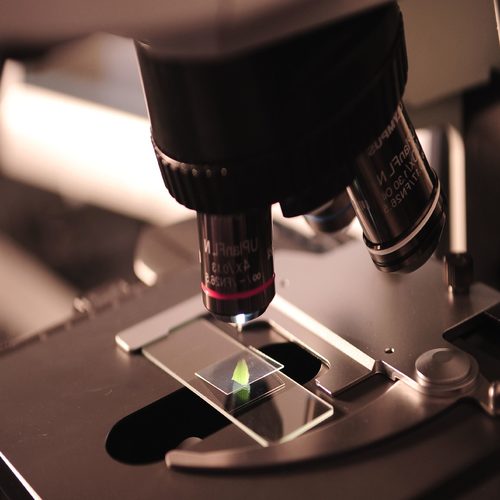Importance of Microbiology
Definition, Branches and Applications
What is Microbiology?
Essentially, microbiology is the study of biological organisms that are too small to be seen with the naked eye (without using such tools as the magnifying glass or microscope etc). Microbiology is therefore dedicated to studying the lives and characteristics of a wide variety of organisms ranging from bacteria and archaea to parasitic worms in their environments.
Here, the discipline is used to learn about all aspects of the organisms in order to not only determine how they live in their environment, but also how they impact their respective surroundings and thus other organisms around them (human beings, animals, etc).
Microbiology has proved to be one of the most important disciplines in biology, making it possible to identify how some of these organisms cause diseases, discover cures for such diseases and even use some microbes for industrial purposes etc.
Some of the fields that microbiologists may specialize in include:
- Immunology
- Soil biology
- Industrial Microbiology
- Biotechnology
- Biogeochemistry
- Microbial genetics
- Aquatic Microbiology
* Although microbiology is, for the most part, described as the study of microorganisms (those that cannot be seen with the naked eye), such groups as algae and fungi contain organisms that do not necessarily require the use of special tools to observe them. Therefore, microbiology also encompasses a number of organisms that fall outside the traditional definition.
Branches of Microbiology
The different branches of microbiology are classified into pure and applied sciences as well as taxonomy.
Bacteriology
Bacteriology is the branch of microbiology concerned with the study of bacteria. This branch is further divided into a number of specializations that include marine bacteriology, sanitary bacteriology, industrial bacteriology, agricultural bacteriology, and systematic bacteriology among others.
Here, this branch of microbiology gives focus to such aspects as types of bacteria and their characteristics, diseases, and application among others.
Mycology
Unlike bacteriology which is the study of bacteria, which are prokaryotic organisms, mycology deals with the study of fungi which are eukaryotic in nature. Found in many types of environments, the different types of fungi (mold and yeast) can be highly beneficial or harmful.
Mycology gives focus to the different properties of these organisms (characteristics, taxonomy, etc) which has it turn made it possible to use them in various industries ranging from breweries to food and medicine.
Those who specialize in mycology are known as mycologists.
Protozoology
Protozoology is one of the newer branches of microbiology based on taxonomy. It is the sub-discipline that deals with the study of protozoa. Like fungi, these are eukaryotic organisms that include such groups as amoeboids, ciliates, sporozans , and flagellates.
Given that a good number of these organisms have been associated with animals and human diseases, protozoologists not only focus on their taxonomy and morphological aspects for classification purposes, but also for medical significance.
Some common examples of diseases caused by protozoa include malaria, sleeping sickness as well as amoebic dysentery.
Phycology
Like mycology, phycology is one of the branches of microbiology that is concerned with the study of multicellular organisms. Unlike mycology, however, phycology deals with the study of different types of algae that can be found in different types of environment.
While they may exist as small microorganisms found floating in the ocean, some algae grow to form large seaweeds found in the aquatic environments.
Apart from being part of the food chain, algae are also involved in the production of oxygen which makes them important in microbiology.
Those who study phycology (e.g. Carl Adolph Agardh) are known as phycologists.
Parasitology
Parasitology is a wide field of microbiology that deals with the study of parasites. For the most part, parasitology is concerned with organisms found in three major groups including protozoa, helminths (worms) and arthropods.
Given that parasitology is concerned with disease-causing organisms (as well as vectors) it has been influenced by a number of other disciplines including immunology and biochemistry among others.
Like mycology and phycology, parasitology entails the study of both unicellular and multicellular organisms.
Those who study parasitology are known as parasitologists.
Immunology
Immunology is the sub-discipline that deals with the study of the immune system. It has been one of the most important areas of study since the 18th Century whose efforts are directed towards enhancing the immune system to protect the body from diseases.
It is worth noting that while diseases are caused by various organisms and foreign substances, they can also result from the immune system itself in cases of autoimmunity.
By studying the relationship between the body, pathogens and the immune system, researchers have made significant strides and breakthroughs that have made it possible to eradicate diseases that were once common in society.
These efforts continue to be seen in studies regarding such diseases and Ebola among others outbreaks identified in different parts of the world.
A person who studies immunology is known as an immunologist.
Virology
Virology is the branch of microbiology that is concerned with the study of viruses. Unlike most of the other organisms which are either described as being unicellular or multicellular, viruses are acellular microbes with simple structures and need host cells to multiply.
Given that viruses need host cells to multiply, they also, end up affecting the cells and consequently causing disease.
In virology, researchers also focus on such aspects as biochemistry, distribution, molecular biology as well as the evolution of viruses which makes
it's possible to not only understand them, but also develop cures to some of the most serious diseases caused by these parasites (AIDs etc).
Nematology
Nematology is the sub-disciplines that deal with the study of multicellular nematodes. Also known as roundworms, nematodes include a variety of organisms (worms) found in a variety of environments on earth (they can be found in soil, mud, sands, mountains, etc).
According to studies, nematodes are some of the most abundant organisms on our planet. Nematology, as a branch of microbiology, has allowed for the classification of these worms based on their general morphology, habitats as well as whether or not they cause diseases, etc.
Those who study nematology are known as nematologists.
Apart from taxonomy, microbiology is also classified into pure sciences.
Some of the most common categories include:
· Microbial cytology - deals with the structure and function of the organisms
· Microbial physiology - is the branch of microbiology that deals with the different parts and normal functions of the organisms (functioning of the different parts of the organism)
· Microbial ecology - branch that deals with the surroundings/habitat of the organism. This makes it possible to understand how the organism interacts and affects its surroundings
· Microbial genetics - is concerned with the genetic makeup of the organism. It is used to identify the different strains and phenotypes of an organism and classify the organisms as such
Applied Microbiology
Whereas taxonomy classification gives focus to the organism and its general characteristics, applied microbiology is focused on how various organisms can be used (applied) in given processes or the impact they can have in different industries.
Some of the most important branches of microbiology based on application include:
Food microbiology
Research studies focus on a variety of microorganisms that contaminate/damage food and those that can be used for food processing/modification among others. As such, microbiology gives special attention to such microorganisms as molds, yeasts, and bacteria among others that either benefit or have negative effects on the quality of food material with public health concern in mind.
* Food microbiology is connected to several other fields (immunology and molecular biology etc) and entails such aspects as food processing and preservation, food ingredients, production and fermentation among others.
Medical Microbiology
This is the branch of microbiology that is concerned with the diagnosis, prevention and treatment of diseases caused by different types of organisms (infection agents). This sub-discipline is therefore related to a number of other fields including virology, bacteriology, immunology, and germicrobiology.
Industrial microbiology
This branch of microbiology is concerned with the use of given microorganisms for industrial production. Here, research studies are directed towards the use of these organisms to increase and maximize yields in industries like fuel, pharmaceutical, and chemicals among others. Here, the use of microorganisms makes it possible to mass produce for a big market.
Agricultural microbiology
Agricultural microbiology is concerned with microbes associated with plants and animal diseases and production. As such, it is not only concerned with the medical significance of these organisms, but also their economic importance for farmers and the industry as a whole. In the process, agricultural microbiology is aimed to solve issues identified in agricultural practices while helping increase yields for farmers.
Some of the other branches of microbiology based on application include:
· Soil microbiology - This is the branch of microbiology that deals with the study of soil microorganisms and how they impact soil properties
· Pharmaceutical microbiology - Concerned with the use of microorganisms for inhibiting contamination as well as the development of pharmaceuticals
· Veterinary microbiology - Focus on microbes that cause diseases
· Microbial biotechnology - Area of microbiology and biotechnology aimed at using microbes for beneficial purposes: It is aimed at enhancing microbial application in the day to day life. A good example of this is the research study currently being conducted (at the time of writing) to use given bacteria to replace the traditional sewage systems by the Gates Foundation.
See also: Cell Biology
Read more specifically about:
How do Bacteria cause Disease?
See Differences between Microbiology and Biochemistry
Return from Microbiology main page to MicroscopeMaster home
References
P. D. Sharma. (2010). Microbiology. Google books.
Robert A. Samson. (2016). Cellular Constitution, Water and Nutritional Needs, and Secondary Metabolites. Environmental Mycology in Public Health.
Stuart Hogg. (2005). Essential Microbiology. The University of Glamorgan, UK.
Links
https://www.researchgate.net/publication/280979203_Microbiology
https://microbiologyonline.ifas.ufl.edu/about/articles/what-are-the-branches-of-microbiology/
Find out how to advertise on MicroscopeMaster!







